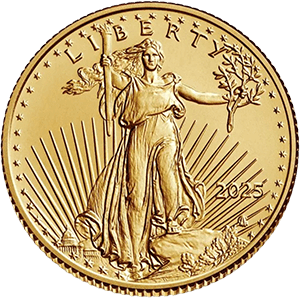IRA and 401(k) retirement savings may be at risk from inflation biting into their worth. Gold could fortify your retirement plans against this danger, but you have to use the right kind of gold. The IRS has strict rules about what kind of gold you can use, and if you don't follow those rules, it could cost you.
This comprehensive guide covers the key aspects of IRA-approved gold, including required purity standards, account setup procedures, and strategies for effectively diversifying your retirement savings. Whether you are new to gold investments or considering a rollover, this resource will provide the information needed to make well-informed decisions.
What Exactly Is IRA-Approved Gold?
Understanding IRA-Approved Gold
IRA-approved gold refers to specific gold products that comply with rigorous IRS standards, making them eligible for inclusion in a self-directed Individual Retirement Account (IRA). This designation ensures that the gold meets stringent criteria for use as a retirement investment, distinguishing it from other types of gold.
One important standard is purity. The IRS mandates that gold held in an IRA must have a minimum purity level of 99.5%. This requirement guarantees that the gold qualifies as investment-grade precious metal rather than being classified as decorative or collectible items.
Key distinctions set IRA-approved gold apart from regular gold investments:
Purity Standards:
-
Gold coins: 99.5% minimum fineness
-
Gold bars: 99.5% minimum fineness
-
Must be produced by accredited refiners
-
Requires proper certification and assay
Gold purity is only one aspect of compliance when it comes to investment in IRA-approved gold. It is equally important to ensure proper custody of the gold. Unlike personal gold collections stored at home or in a bank safety deposit box, gold held in an IRA must be stored in an IRS-approved depository. Keeping such assets in unapproved locations constitutes a prohibited transaction, which could result in the disqualification of your entire IRA.
A self-directed IRA is designed to hold alternative investments, including precious metals such as gold. Unlike traditional IRAs managed by large financial institutions, self-directed IRAs provide greater flexibility, allowing investors to diversify into assets like gold, silver, real estate, and more. These accounts are administered by specialized custodians who handle the required documentation, giving you the freedom to make and control your investment decisions.
Types of Gold That Qualify for Your IRA
Not all gold products make the cut for IRA inclusion. Let's break down what's approved and what's not, so you can make smart choices when building your precious metals portfolio.
Approved Gold Coins
The IRS maintains a specific list of gold coins eligible for IRA investment. These aren't rare collectibles or numismatic pieces – they're bullion coins valued primarily for their gold content.
American Gold Eagles
These coins are very popular with investors and are among the top recommendations for investing in gold. While they contain gold of only 91.67% (22 karat) purity, the IRS has granted them a special status that allows their owners to treat them as if they were any other official coin of the United States. Each coin consists of one troy ounce of gold, plus very small amounts of other metals that give the coin added toughness.
Canadian Gold Maple Leafs
Provides 99.99% exactness, surpassing IRS stipulations. These coins boast novel security features, such as radial lines and micro-engraved privy marks of the maple leaf, which render them virtually impossible to forge.
Australian Gold Kangaroos
(formerly Gold Nuggets) also consists of 99.99% pure gold. The Perth Mint changes the kangaroo design every year, but this does not affect their IRA qualification because they are valued for their gold content and not for their ability to be worth more because of their design.
Other approved coins include:
-
Austrian Gold Philharmonics (99.99% pure)
-
British Gold Britannias (99.99% pure, for coins dated 2013 and later)
-
Australian Lunar Series (99.99% pure)
Gold Bars and Bullion
Gold bars offer another pathway to IRA investment, often providing lower premiums over spot price compared to coins. However, they must meet specific requirements.
Approved gold bars must:
-
Contains 99.5% minimum fineness
-
Be manufactured by NYMEX or COMEX-approved refiners
-
Include proper hallmarks showing weight, purity, and refiner
-
Be in good delivery form
Leading approved refiners include:
-
PAMP Suisse
-
Credit Suisse
-
Valcambi
-
Perth Mint
-
Royal Canadian Mint
-
Johnson Matthey
Bar sizes typically range from 1 gram to 400 ounces, though most IRA investors choose between 1 ounce and 10 ounce bars for liquidity purposes. Larger bars may offer slightly lower premiums but can be harder to sell if you need to take distributions.
What Doesn't Qualify
Understanding what's excluded helps avoid costly mistakes. The IRS specifically prohibits:
-
Rare or collectible coins (even if gold)
-
Gold jewelry
-
Gold ETF shares (these go in regular IRAs, not physical gold IRAs)
-
Fractional gold coins below certain purity standards
-
Gold rounds from non-approved private mints
-
Damaged or altered coins and bars
Setting Up Your Gold IRA: A Step-by-Step Process
Here's how to get started without getting overwhelmed by the details.
Step 1: Choose Your Self-Directed IRA Custodian
Your first move involves selecting a custodian, like American Standard Gold, authorized to handle precious metals IRAs. These aren't your typical investment firms; they specialize in alternative assets and understand IRS regulations for physical gold storage.
Look for custodians with:
-
Transparent fee structures
-
Strong industry reputation (check BBB ratings)
-
Experience with precious metals IRAs
-
Good customer service reviews
-
Clear communication about processes
Popular custodians include Equity Trust, Kingdom Trust, and New Direction IRA, though many others exist. Compare at least three options before deciding.
Step 2: Fund Your Account
Once you've chosen a custodian, you'll need to fund your new self-directed IRA. You have three main options:
Direct Transfer: Move funds from an existing IRA directly to your new account. This method avoids any tax consequences since the money never touches your hands.
60-Day Rollover: Take a distribution from your current retirement account and deposit it into your gold IRA within 60 days. Miss the deadline, and you'll face taxes plus potential penalties.
Annual Contributions: Add fresh money up to annual IRS limits ($6,500 for 2024, or $7,500 if you're 50 or older).
Step 3: Select a Precious Metals Dealer
Your custodian doesn't sell gold – they just hold it. You'll need a reputable dealer to supply your IRA-approved products. Some custodians have preferred dealers, but you're usually free to choose your own.
Evaluate dealers based on:
-
Competitive pricing
-
Product selection
-
Buyback policies
-
Industry accreditations
-
Customer reviews
-
Educational resources
Step 4: Make Your Purchase
Work with your dealer to select specific gold products for your IRA. They'll coordinate with your custodian to ensure proper payment and delivery to the approved depository. Never take personal possession of the gold; it must go directly from dealer to depository to maintain IRA compliance.
Step 5: Secure Storage
Your gold heads to an IRS-approved depository for safekeeping. These facilities offer:
-
Full insurance coverage
-
Regular audits
-
Segregated or non-segregated storage options
-
High-security vaults
-
Detailed inventory tracking
Major depositories include Delaware Depository, Brink's, and International Depository Services. Your custodian typically has existing relationships with one or more facilities.
Expert Recommendations for Gold IRA Success
Consider your timeline carefully. Gold IRAs work best for investors with:
-
At least 10 years until retirement
-
Existing traditional retirement savings
-
Concern about currency devaluation
-
Desire for tangible asset ownership
Younger investors might emphasize growth through stocks while adding gold gradually as they approach retirement. Those nearing retirement might increase gold allocation for stability, though maintaining some growth assets remains important for longevity risk.
Taking Action: Your Next Steps
Now that you understand IRA-approved gold inside and out, what comes next? Here's your action plan:
-
Assess your current retirement portfolio. Calculate your existing asset allocation across stocks, bonds, and other investments. Identify whether adding gold would improve diversification.
-
Research custodians thoroughly. Request fee schedules from at least three self-directed IRA custodians. Compare total costs, not just headline fees.
-
Consult professionals. Speak with your financial advisor or tax professional about how gold IRAs fit your specific situation. Generic advice only goes so far.
-
Start small if uncertain. You don't need to convert your entire retirement savings to gold. Many investors begin with modest allocations and adjust over time.
-
Stay educated. Precious metals markets evolve constantly. Subscribe to reputable market analysis and keep learning about factors affecting gold prices.
Key Takeaways
-
IRA-approved gold must meet 99.5% purity standards and be stored in IRS-approved depositories
-
Popular options include American Gold Eagles, Canadian Maple Leafs, and bars from accredited refiners
-
Self-directed IRAs enable precious metals investing with tax advantages
-
Total costs typically run $300-600 annually plus dealer spreads
-
Financial experts often recommend a 5-10% portfolio allocation to precious metals
-
Gold IRAs offer inflation protection but don't generate income
-
Proper setup requires choosing a custodian, funding the account, and selecting a reputable dealer


